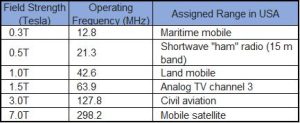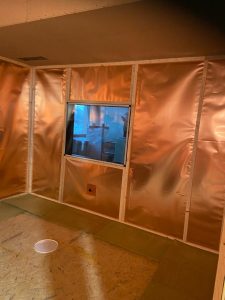Demystifying the MRI Room: A Shield Against the Silent Storm
Magnetic Resonance Imaging (MRI) scans are a cornerstone of modern medicine, offering detailed views inside the body. But have you ever wondered how these powerful machines achieve such clarity? A crucial element is the MRI room’s RF shielding, a silent guardian that protects image quality and patient safety.
Why is Shielding Important in MRI?
Imagine a symphony conductor trying to lead an orchestra amidst a cacophony of noise. That’s what an MRI scanner would face without proper shielding. MRIs use radio waves (RF) to generate detailed images. However, external RF signals from sources like radio stations or even nearby electronics can disrupt these delicate signals, leading to distorted images.
This shielding serves a dual purpose:
- Blocking External Noise: It keeps out stray radio waves that could contaminate the MRI signal, ensuring clear and accurate images.
- Preventing Interference: It confines the MRI scanner’s own RF emissions, preventing them from interfering with nearby medical devices like pacemakers.
The Science Behind the Shield
The table highlights the overlap between MRI scanner operating frequencies and common communication devices. This emphasizes the need for effective shielding.

The Faraday Cage: The MRI room essentially becomes a giant Faraday cage. This metallic enclosure, commonly made of copper mesh laminated panels, reflects and absorbs radio waves, creating a quiet zone for the MRI scanner.
Specialized Construction: Building an MRI room is no small feat. Specialized firms handle the design and construction, ensuring the optimal layout with three layers:
- Outer Shell: Provides structural support for the entire room.
- Middle RF Shield: The metallic heart of the room, typically made of copper due to its excellent conductivity.
- Interior Layer: Finished with materials like drywall for a functional and comfortable environment.
Key Components of the Shield:
- Walls and Ceiling: The entire enclosure, including walls, floor, and ceiling, is shielded to form a complete Faraday cage.
- Floor: Often constructed with a solid copper base covered by anti-static flooring for safety.
- Door: A critical point, sealed with conductive strips or pneumatic tubes to prevent RF leakage. Regular maintenance of door seals is crucial.
- Windows: Specially designed with a mesh layer sandwiched between glass panels, ensuring both visibility and RF shielding.

RF cage construction with viewing RF windows
Conclusion
The seemingly ordinary walls of an MRI room hold a fascinating secret – a sophisticated shield that ensures the accuracy and safety of this vital medical technology. By understanding the science behind RF shielding, we gain a deeper appreciation for the silent symphony taking place within the MRI scanner.
Related Post
Medx Solution is a young company with dynamic growth. We are specialist in radiofrequency shielding acting in medical field (MRI systems) and science faculties.